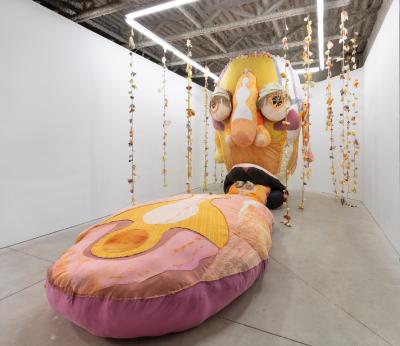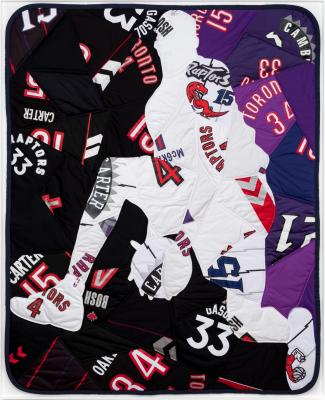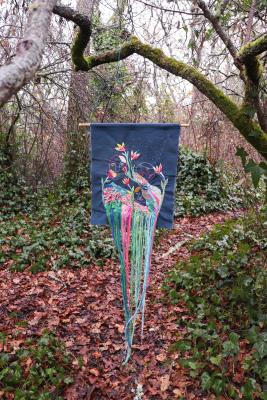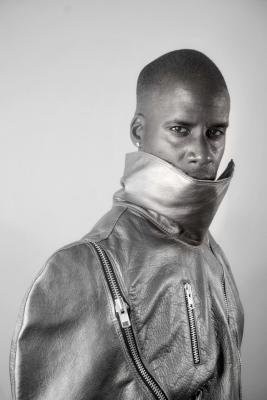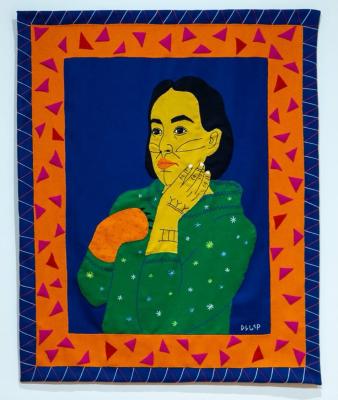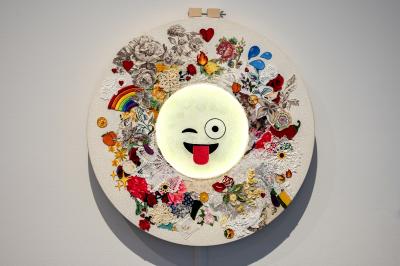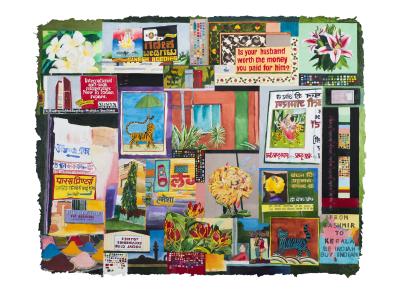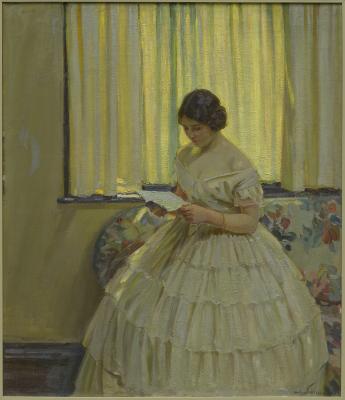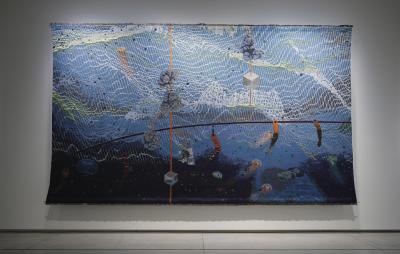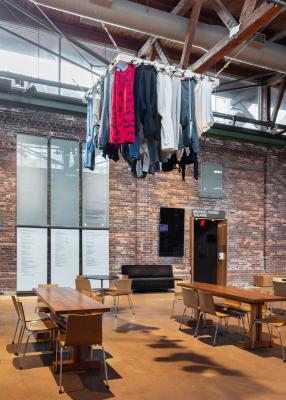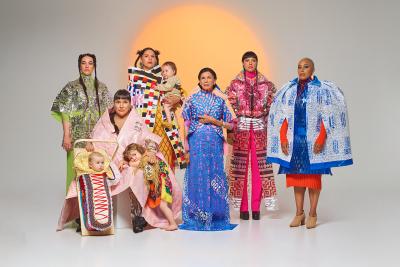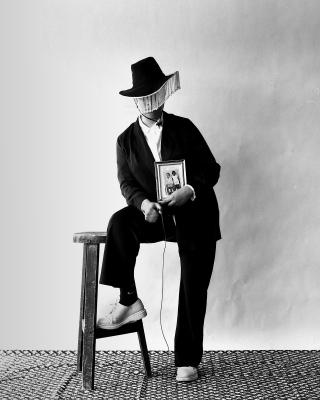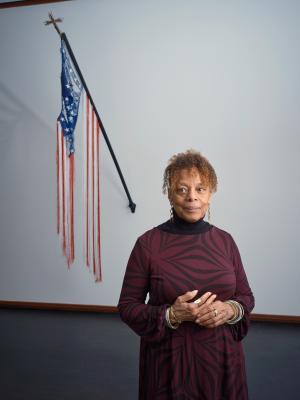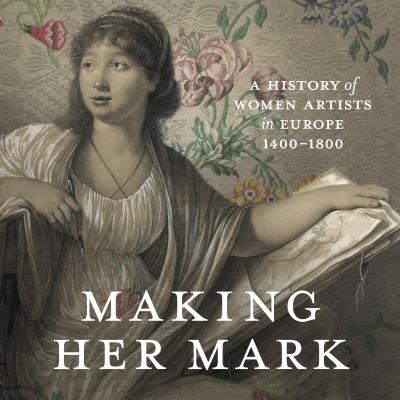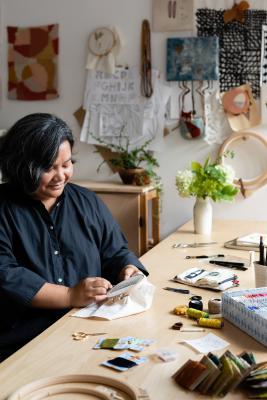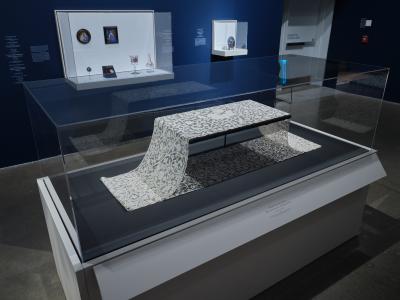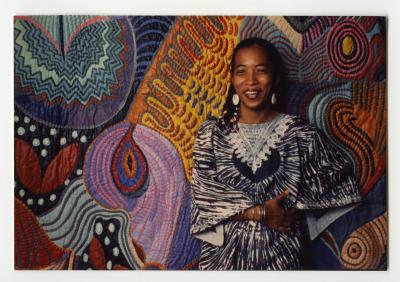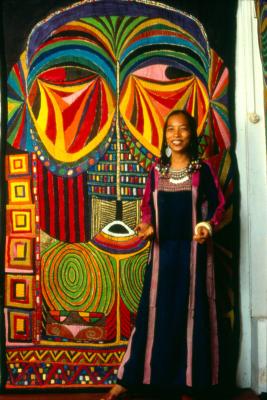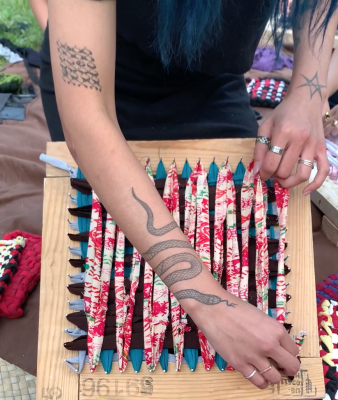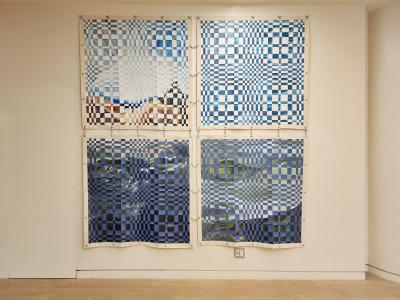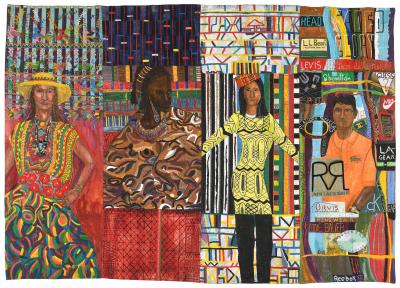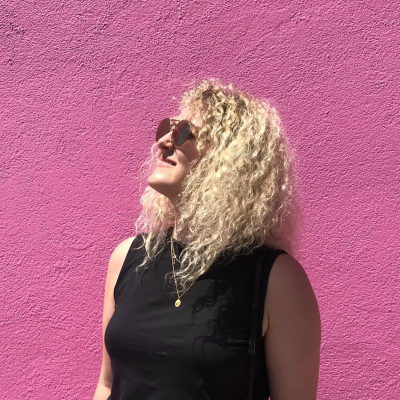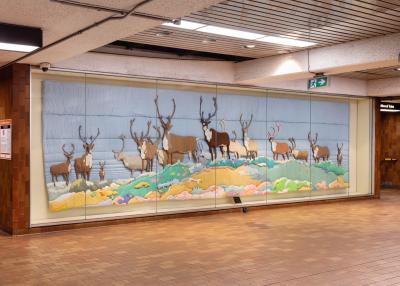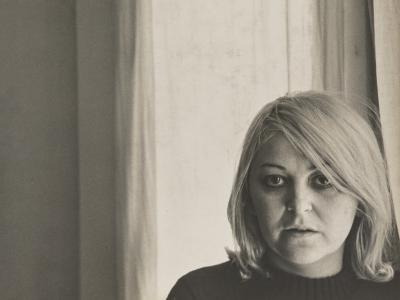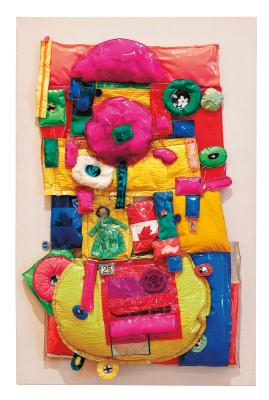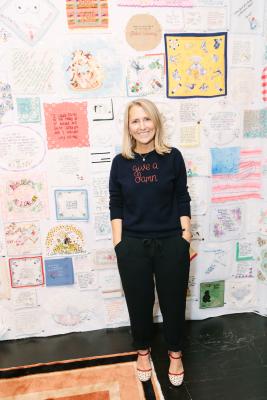Artist, Filmmaker, Trailblazer: The Life of Joyce Wieland
Works from across Wieland’s prolific career are now on view at the AGO as part of the Toronto-born artist’s first retrospective in almost 40 years
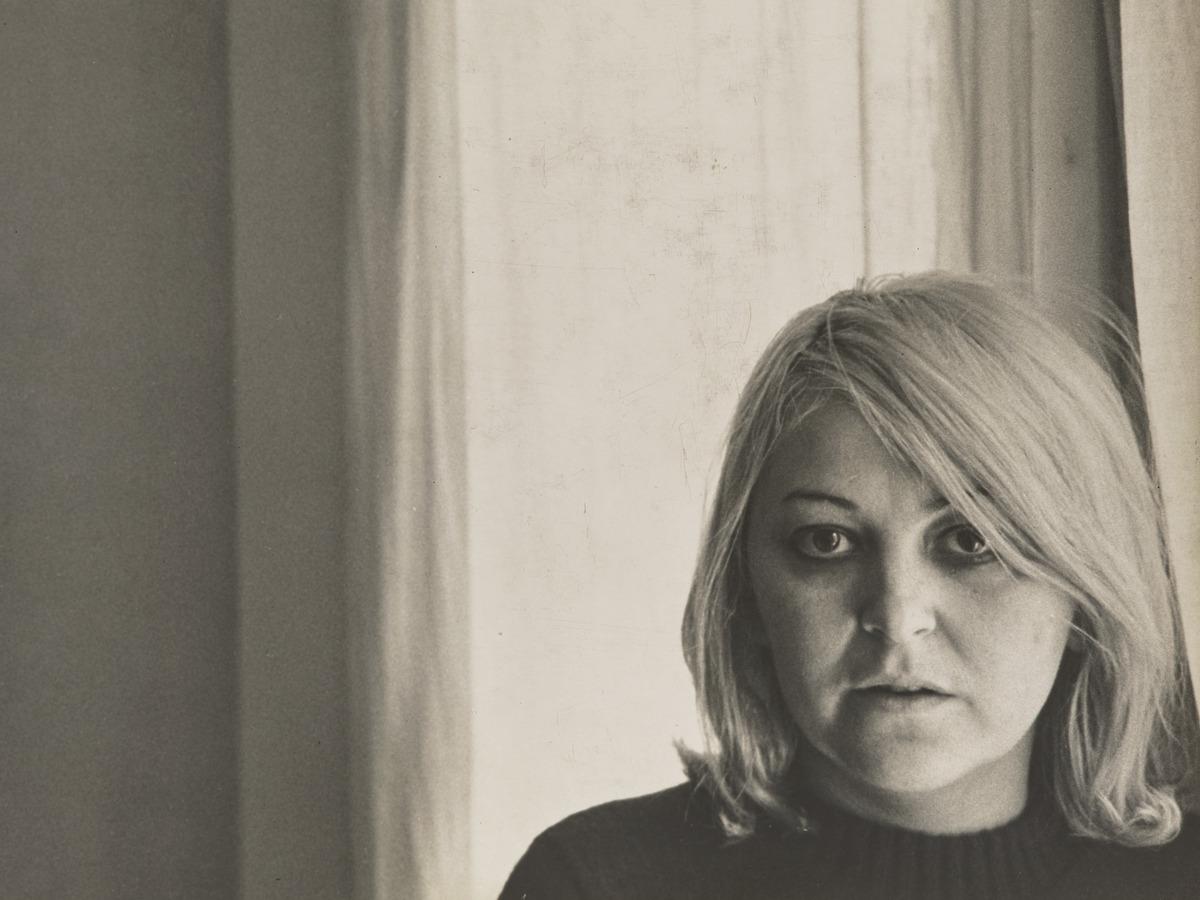
Michel Thomas Henry Lambeth. Joyce Wieland (by window), unknown. Gelatin silver print, 24.5 x 33.7 cm. Art Gallery of Ontario. Gift of Av Isaacs, Toronto, 1994. © Estate of Michel Lambeth. 94/453
With her comedic, critical, and playful artistry, Joyce Wieland (1930 - 1998) is one of Canada’s most prominent and prolific artists. She broke barriers across Canadian art institutions, tackled topics considered “radical” for her time, and challenged Canadians to reckon with their love and understanding of their country. Wieland approached topics with care and generosity, infusing her practice with her lived experiences and making her work all the more impactful.
The exhibition Joyce Wieland: Heart On, on view now at the AGO, brings together over five decades of Wieland’s work. Increasingly relevant to the current political landscape, Heart On features themes Wieland engaged with, including feminism and female sexuality, the complexities of nationhood, social equity, and ecological devastation. It’s the first exhibition to feature Wieland’s experimental films alongside her other artworks, showcasing the breadth of mediums and materials she incorporated into her practice. It’s also the first retrospective of Wieland’s practice in almost 40 years. Heart On is curated by Georgiana Uhlyarik, Fredrik S. Eaton Curator of Canadian Art at the AGO and Anne Grace, Curator of Modern Art at the Montreal Museum of Fine Arts (MMFA).
From exhibiting her work in an art museum for the first time to having her memorial hosted in Walker Court, Wieland had a career-long, almost lifelong, relationship with the AGO. The AGO was one of the first institutions to publicly acquire her work, and she made history as the first living woman artist to have a major retrospective at the AGO.
Keep reading to learn more about how Wieland made history at the AGO and beyond.
1930s to 1940s — Early Life Growing Up in Toronto
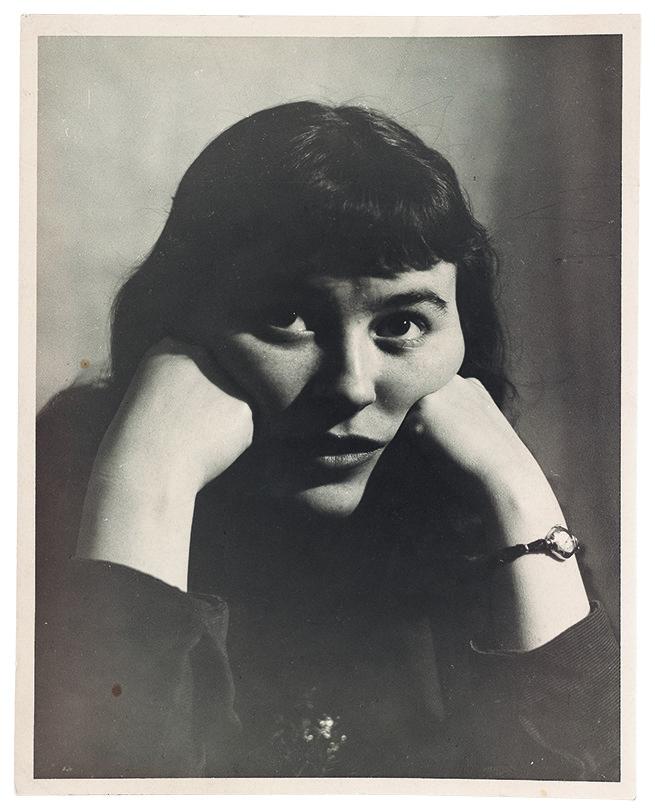
Joyce Wieland, about 1955, black-and-white photograph. National Gallery of Canada, Library and Archives, Joyce Wieland fonds, Photo © NGC.
Wieland was born in Toronto on June 30, 1930, the youngest of three children to Sydney Arthur and Rosetta Ameila “Billy” Wieland. Her parents emigrated from England to Canada during the mid-1920s, and the family struggled financially during and after the Great Depression. Both Wieland’s parents passed early in her life, leaving her older brother and sister to take care of her. The siblings continued to struggle financially, prompting them to move often.
Wieland began high school in 1944 at Toronto Central Technical School on Bathurst Street, enrolling in fashion design. There, she met her mentor, artist Doris McCarthy (1910 - 2010), who encouraged her to join the school’s fine arts program.
1950s — A Budding Career and Artistic Practice
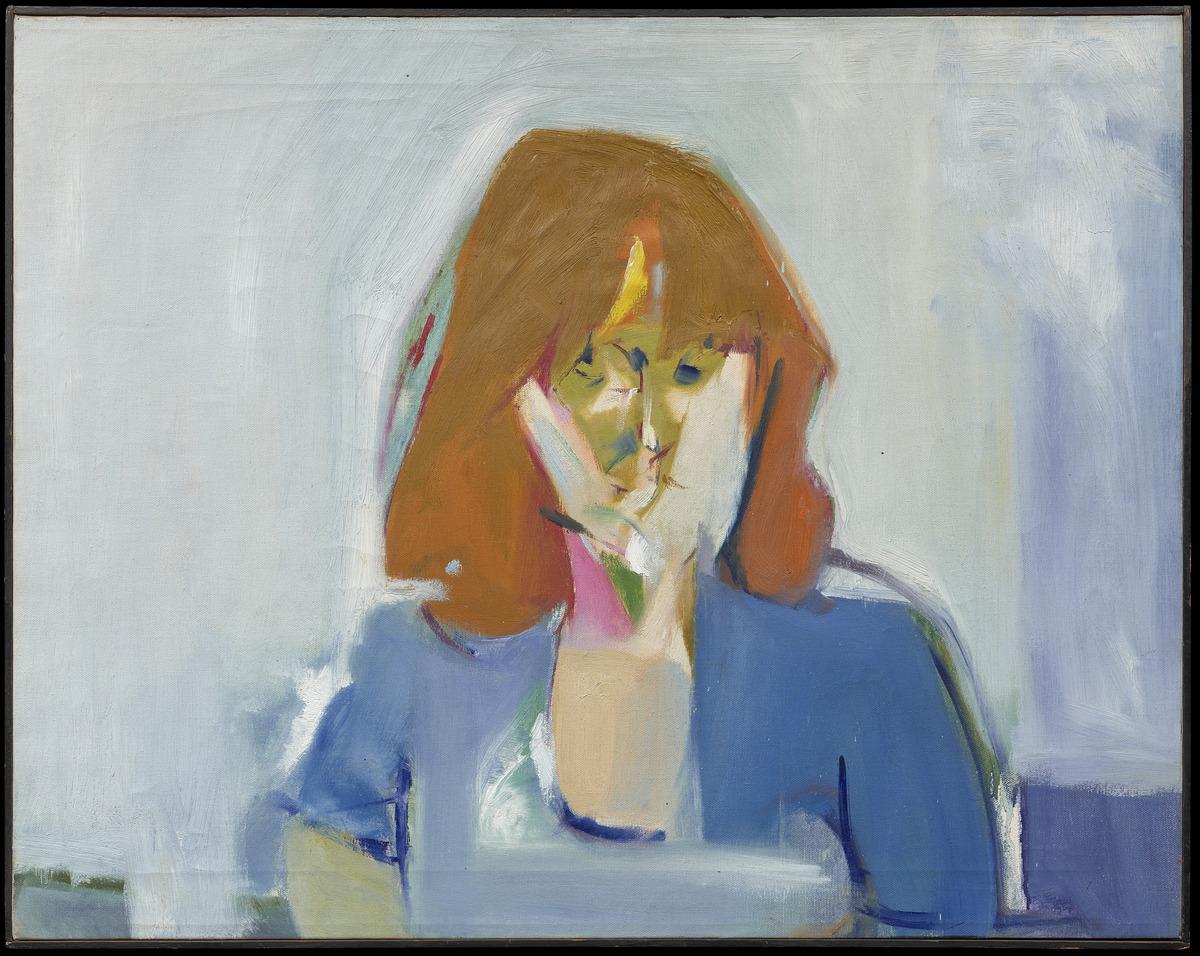
Joyce Wieland. Myself, 1958. Oil on canvas, 56 x 71 cm. Collection of Margaret J. Break © National Gallery of Canada, Ottawa.
After graduating from Toronto Central Technical School, Wieland found work as a cel painter for Graphic Associates Film Production Ltd., a Toronto animation studio. She moved to 700 Bathurst Street, where she lived with other artists. While working, she began developing her artistic practice, creating some of her first experimental films. She met her husband, fellow artist Michael Snow (1928 – 2023), at Graphic Associates, and they married at Toronto City Hall in 1956. That same year, Wieland’s work was shown for the first time in a group exhibition of the Canadian Society of Graphic Art at the AGO.
1960s — Solo Exhibitions, New York, and Political Passion
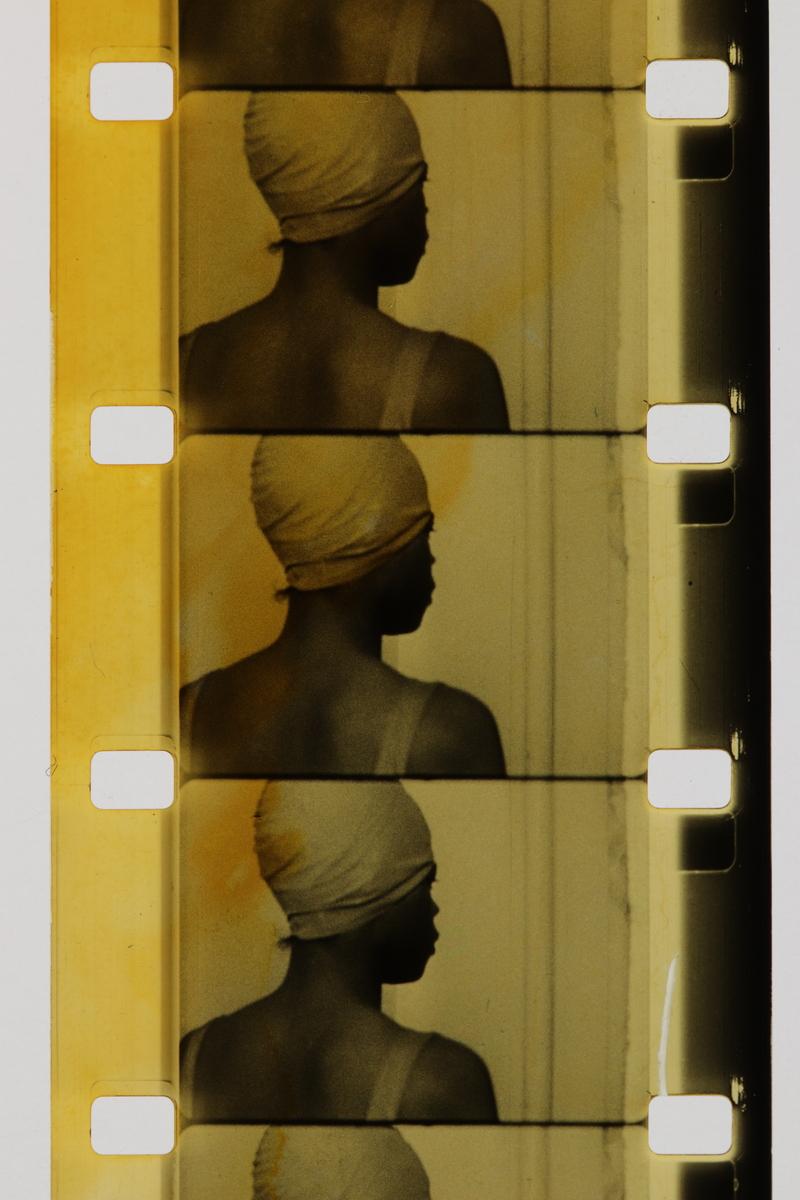
Handtinting (film print), 1967. Film, 16mm, colour, silent, 6 min. Joyce Wieland fonds, Cinémathèque Québécoise. Photo Stéphanie Côté, Courtesy of Cinémathèque Québécoise
The 1960s was a defining decade in Wieland’s artistic practice. She incorporated new materials and mediums into her work and accomplished many firsts, including her first solo exhibition at Dorothy Cameron’s Here and Now Gallery in 1960. From there, Wieland began to exhibit her work regularly across and beyond Toronto. In 1962, Wieland became one of the few women artists to have a solo exhibition at the Issacs Gallery – the first Canadian commercial gallery to represent contemporary art.
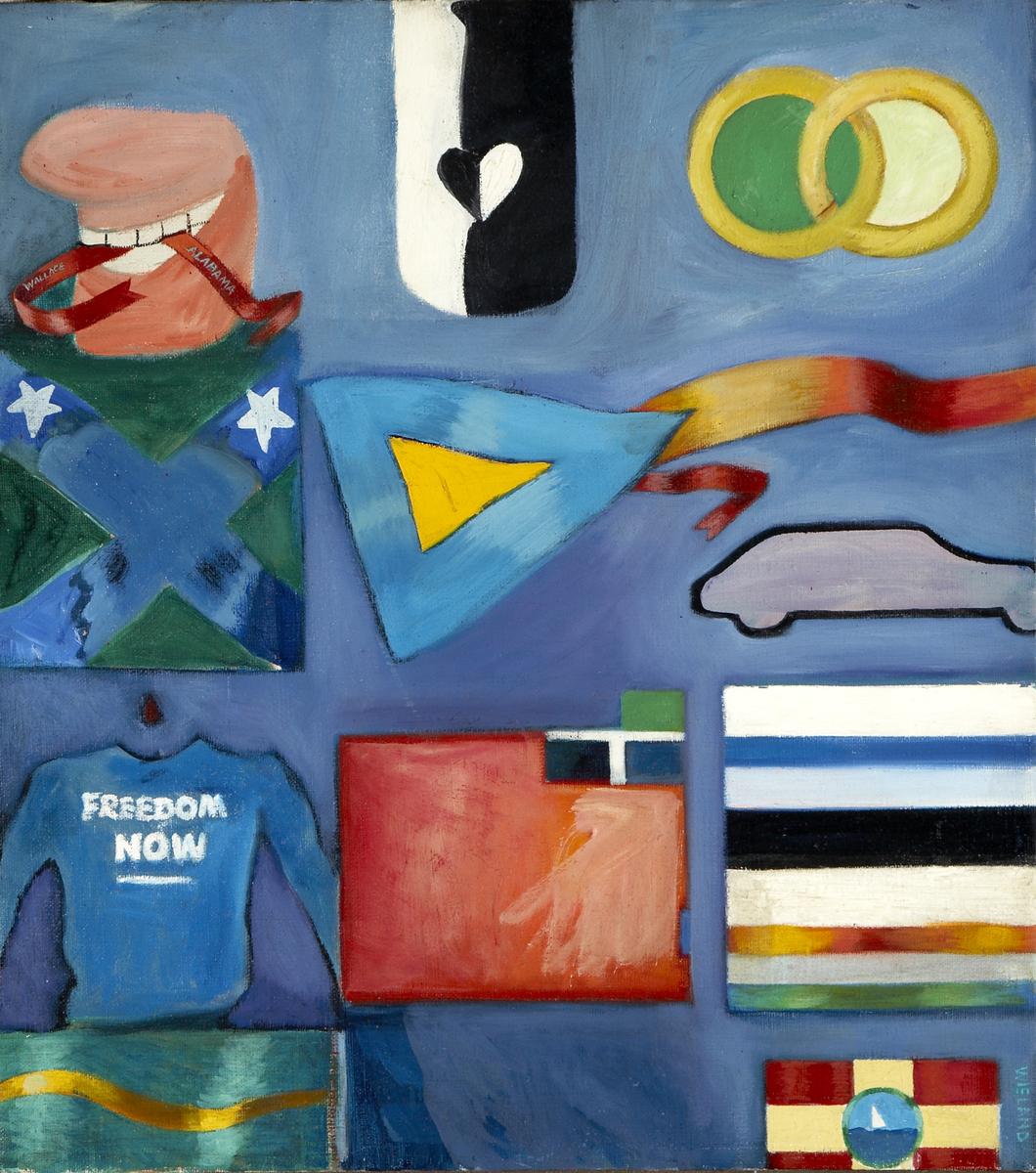
Joyce Wieland. March on Washington, 1963. Oil on canvas, 37.5 x 42.5 cm. Art Gallery of Hamilton, Gift of Irving Zucker, 1992. © National Gallery of Canada, Ottawa. Photo: Mike Lalich.
Later that year, Wieland moved to New York City with Snow, marking the beginning of the only decade she lived away from Toronto. In New York, she created and exhibited her first plastic works, filmed the bulk of her experimental films, and established herself as an avant-garde filmmaker. Wieland also became increasingly involved in politics during this time, which was heavily reflected in her work. She and Snow attended anti-war and Civil Rights protests, including the March on Washington.
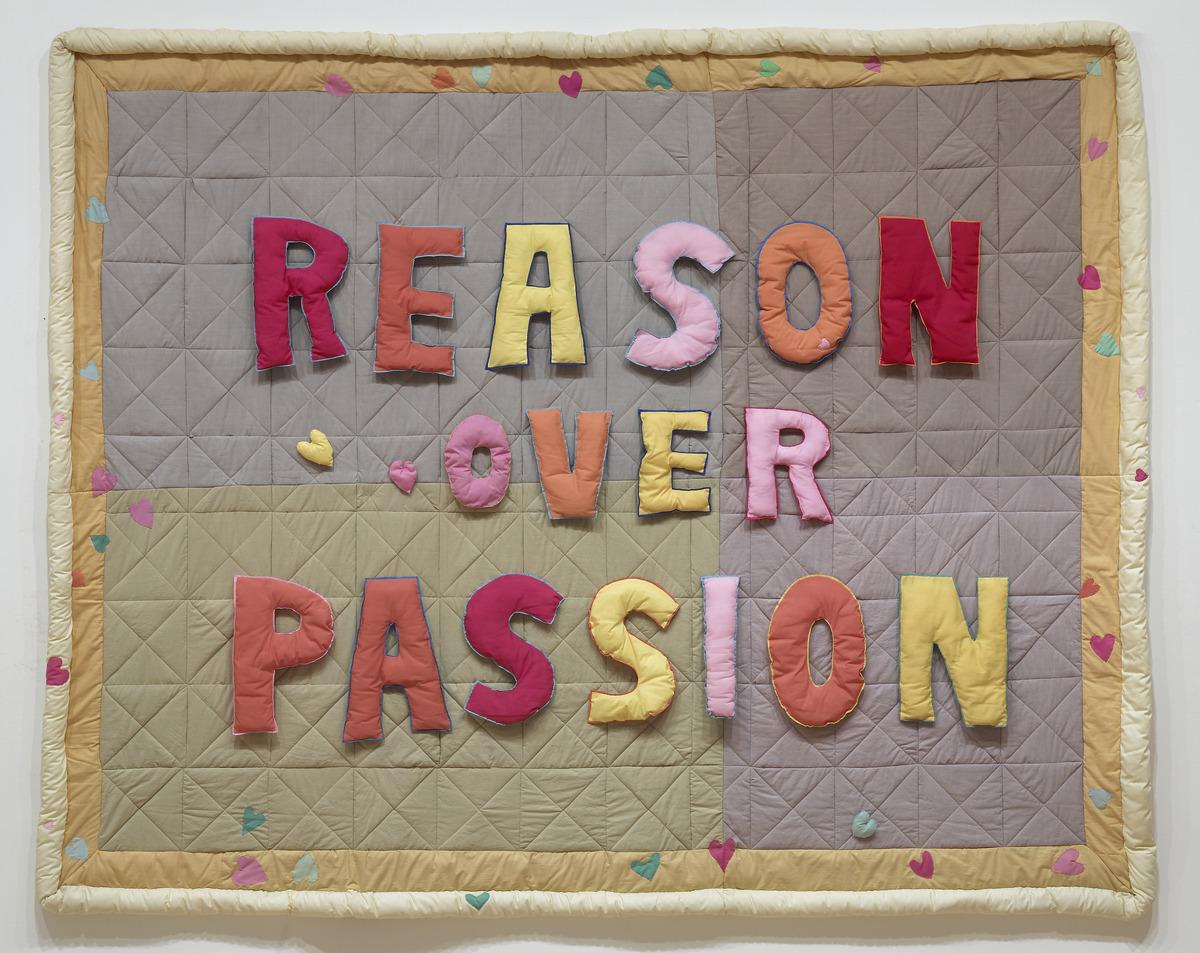
Joyce Wieland. Reason over Passion, 1968. Cloth, thread, batting, 256.5 x 302.3 x 8 cm. National Gallery of Canada, purchased 1970 © National Gallery of Canada, Ottawa.
Wieland remained connected to Canadian politics during this time. Swept up in “Trudeaumania,” she and Snow hosted a quilt-in at their Manhattan loft to create La raison avant la passion (1968) for the newly elected Prime Minister Pierre Eliot Trudeau. The quilt was based on a quote by Trudeau and is currently on view in Heart On in the Carol & Morton Rapp Gallery (gallery 505) alongside its English counterpart.
1970s — Making History With True Patriot Love/Véritable amour patriotique
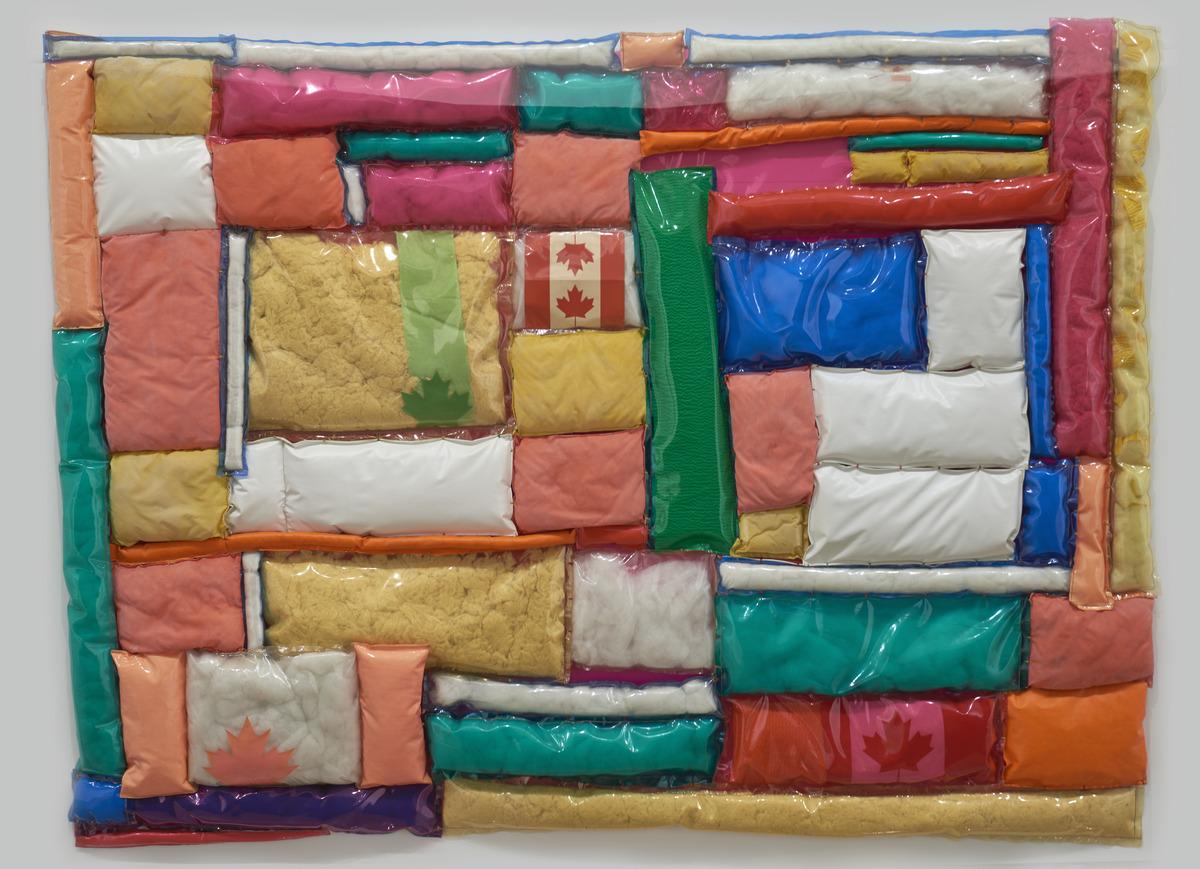
Joyce Wieland. Confedspread, 1967. Plastic and cloth, 146.2 x 200.4 cm. National Gallery of Canada, purchased 1968. © National Gallery of Canada, Ottawa.
Wieland’s influence continued to grow, so much so that she made history as the first living woman artist to have a solo exhibition at the National Gallery of Canada (NGC) in 1971. True Patriot Love/Véritable amour patriotique encapsulated Wieland’s complicated love for Canada. This groundbreaking exhibition appropriated icons of Canadian nationhood, explored Arctic cultures and livelihoods, and inserted women’s craft into contemporary art by incorporating numerous textile works created by crafters across Canada. True Patriot Love also featured a duck pond, the massive inedible Arctic Passion Cake (1971) and a perfume Wieland created called Sweet Beaver: the Perfume of Canadian Liberation (1971), all a testament to how she incorporated her humour into her works. Wieland returned to Toronto later that year.
Wieland’s love for Canada even drove her and 20 other artists to chain themselves to the entrance of the AGO in 1972 in protest against the appointment of American Richard J. Wattenmaker as the AGO’s Chief Curator. From Wieland’s perspective, the AGO was not thinking enough about Canada and Canadian art.

Joyce Wieland. Defend the Earth, 1972. Quilted Egyptian cotton, dacron, handstitched, 195 x 719.3 x 12.7 cm. National Research Council Canada, Ottawa ON, commissioned for the National Science Library. © National Gallery of Canada, Ottawa.
Wieland continued to incorporate textiles and craft into her work during this decade. In 1972, she became the only woman artist to commission a work for the National Science Library. She created the quilt Defend the Earth (1972). Its pastel palette, pillowy letters, and billowing flowers starkly contrast the library’s brutalist architecture and Wieland’s serious message to the scientists. This quilt is on view as part of Heart On in gallery 505, leaving the National Science Library (where it can only be seen by researchers) for the first time.
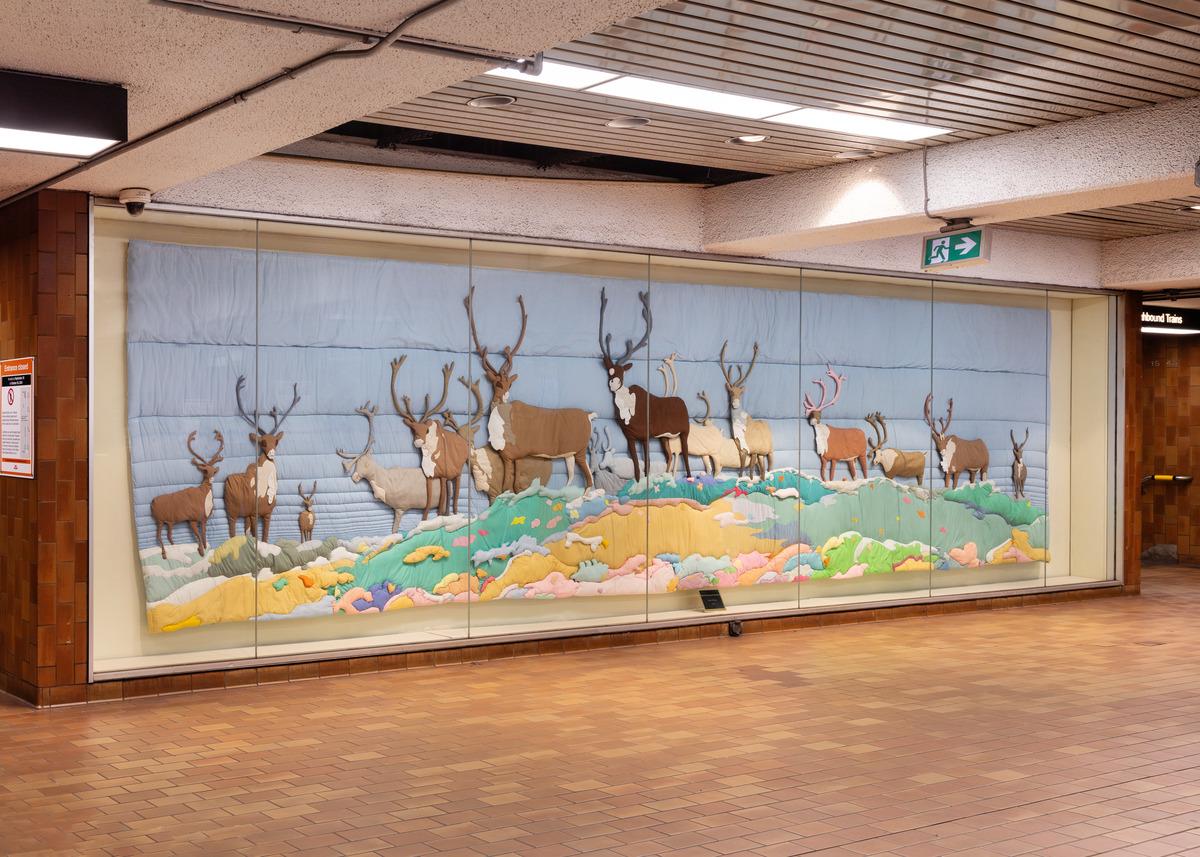
Joyce Wieland. Barren Ground Caribou, 1977-1978. Cloth, thread, batting, 243.8 x 914.4 x 8.68 cm, City of Toronto, Public Art and Monuments Collection. © National Gallery of Canada, Ottawa. Photo: Laura Findlay
Wieland created her largest quilt mural during this decade, which may be familiar to Torontonians who frequent Spadina Station. Barren Ground Caribou (1977-1978) has lived at the Kendal Avenue entrance of Spadina Station since it was commissioned by the TTC in 1978. Barren Ground Caribou is also on view in Heart On in the Sandra Rotman Gallery (gallery 500), fulfilling Wieland’s dream of displaying this work in an exhibition.
Wieland and Snow separated in 1979, marking the end of their 23-year marriage.
1980s — Making History at the AGO
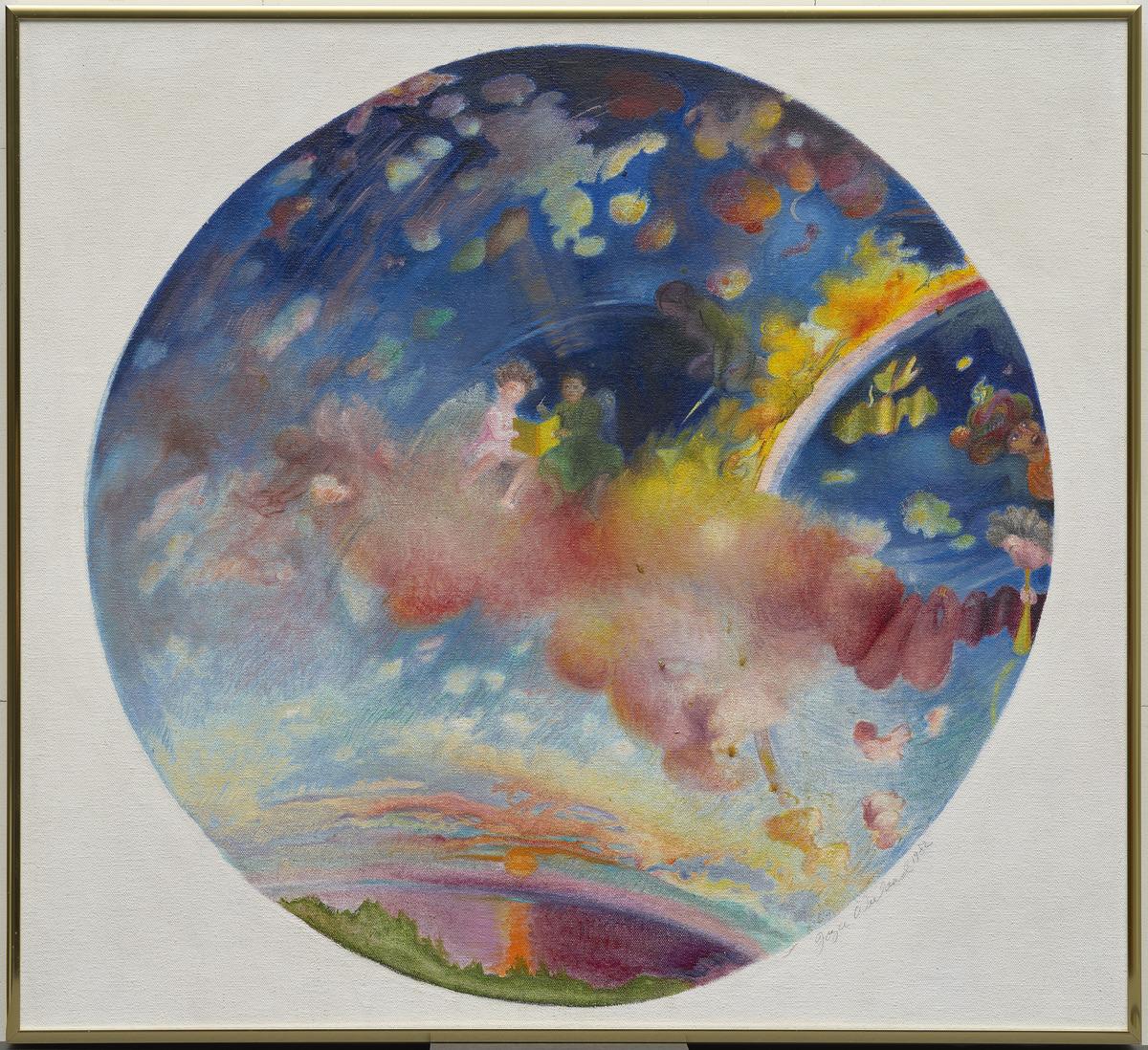
Joyce Wieland. The Discussion of Flaubert’s Egyptian Journals, 1982. Oil on canvas, Framed: 56.6 × 61.8 cm. Art Gallery of Ontario. Gift of Lynn McDonald, 2020. © National Gallery of Canada, Ottawa. Photo: AGO. 2020/153
In 1987, Wieland made history again by becoming the first living woman artist to have a major retrospective at the AGO. This was Wieland’s first career-spanning exhibition and publication. The exhibition went on to tour across Canada.
Throughout the late 1970s and 1980s, Wieland returned to drawing and painting after stepping away from the medium for almost 15 years. This didn’t stop her from exploring new mediums, however. In 1982, Wieland created Venus of Scarborough, a floral sculpture depicting the goddess Venus lounging. The sculpture was planted in the Scarborough Bluffs, overlooking Lake Ontario. As part of Heart On, visitors can see a recreation of Venus of Scarborough in Grange Park in the summer of 2025 (located beside the dog park).
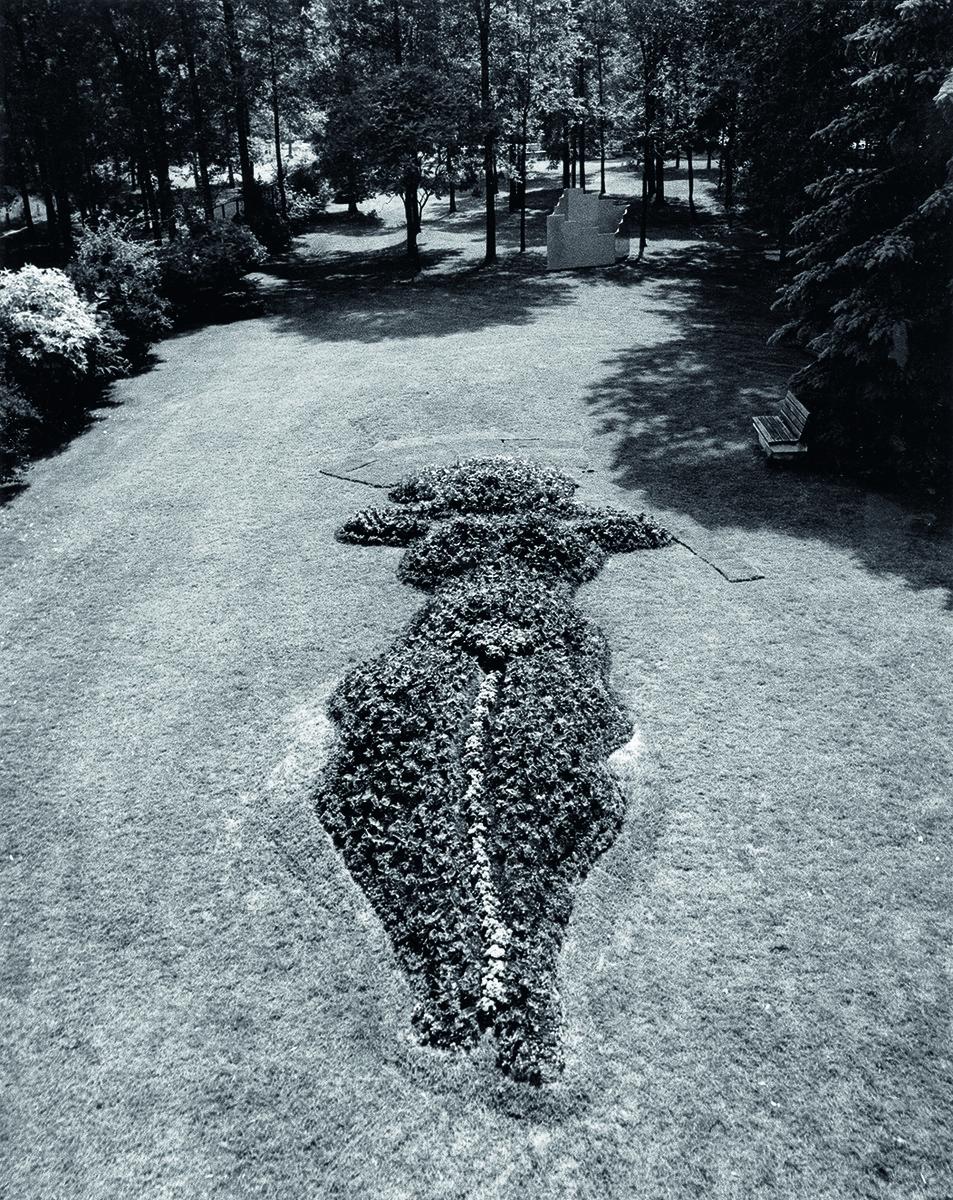
Venus of Scarborough, installed at the Contemporary Outdoor Sculpture exhibition at The Guild, curated by Sorel Etrog, 1982. Photo: Jim Chambers.
1990s — Wieland’s Alzheimer’s Diagnosis
Wieland was diagnosed with Alzheimer's disease in 1991. Her community of women friends took care of her until the end of her life. Wieland passed in 1998, just three days short of turning 68. Her funeral was held at St. George the Martyr Church in Grange Park. According to attendees, a cat, one of Wieland’s favourite animals, appeared and led the funeral procession to her memorial at the AGO. The Gallery opened the door to the Grange House, a rare occurrence, and held her memorial in Walker Court. Wieland’s ashes remain interred in the garden wall of St. George.
This is only a small taste of what Wieland accomplished in her career. Travel through a detailed timeline of Joyce Wieland’s life by visiting Joyce Wieland: Heart On, currently on view on Level 5 of the AGO. The exhibition is curated by Georgiana Uhlyarik, Fredrik S. Eaton Curator of Canadian Art at the AGO and Anne Grace, Curator of Modern Art at the MMFA. It's co-organized by the AGO and MMFA. Learn more about Wieland’s life and art by purchasing the exhibition catalogue at the AGO Shop online and in store.

